You Eat What You Are
August 25, 2015 | By Shoal Creek Conservancy
This blog post was written by Ted Lee Eubanks. To learn more about the author, please visit this site.
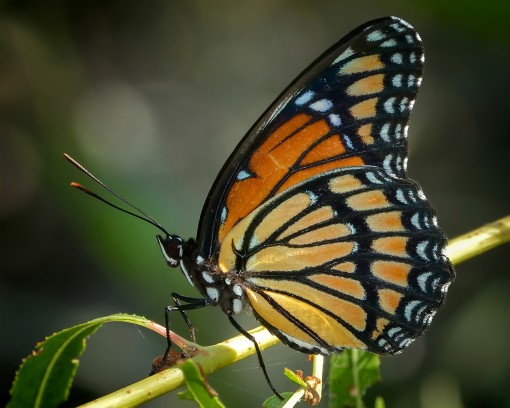
Your yard is replete with toxic plants. Oleander, castor bean, wisteria, chinaberry, and mistletoe are but a few examples of garden plants that pack a punch. Texas mountain laurel (Sophora secundiflora) contains cytisine, an alkaloid. Both the leaves and seeds contain this toxin, and Indians consumed the seeds in low doses as a hallucinogen. Consuming high doses of this plant and its toxin can be fatal.
Insects have evolved to use such plants as protection from predators. For example, the viceroy butterfly caterpillar feeds on plants in the willow family (Salicaceae). The caterpillars sequester the salicylic acid in their bodies, which makes them bitter to potential predators.
The viceroy is thought to mimic the monarch butterfly. Monarch caterpillars feed on toxic milkweeds, making them unpalatable. Recent studies show that both viceroys and monarchs are bitter to predators, and therefore they may actually be mimicking each other (known as Müllerian mimicry).
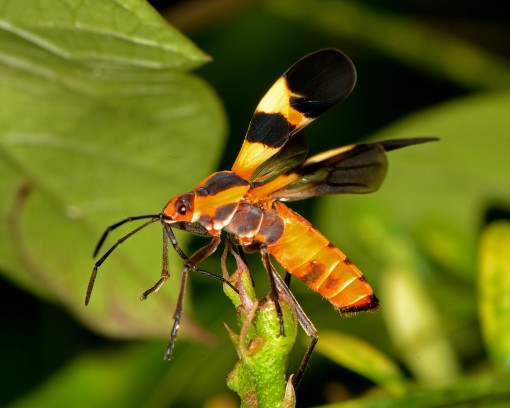
A number of insects take advantage of the milkweeds. The large milkweed bug (Oncopeltus fasciatus) is an example of an insect that has evolved to tolerate the toxins in milkweeds. In fact, milkweed bugs concentrate the bad tasting compounds found in the sap of milkweed plants in their bodies. An unsuspecting bird tasting a milkweed bug for the first time will never try a bright orange-and-black bug again. Using bright colors to advertise to potential predators that you are inedible (or at least taste bad) is known as aposematism.
A number of perfectly edible species mimic the milkweed bug. Predators tend to avoid all similarly colored insects after they learn their lesson the first time. Batesian mimicry is when a harmless species mimics one that is harmful.
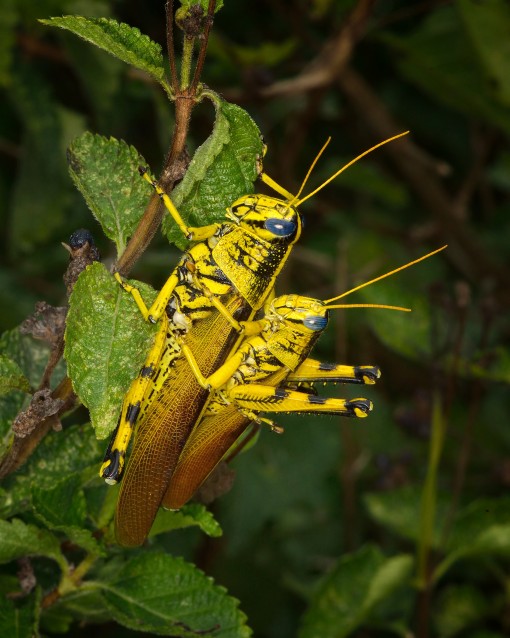
The form of spotted bird grasshopper that is common in Central Texas is aposematic, as well. This grasshopper feeds on the leaves of the wafer ash or common hoptree (Ptelea trifoliata). The bitter leaves were used by early German immigrants in Texas as a substitute for hops in brewing beer. The grasshopper feeds on the bitter leaves, and becomes chemically protected. It advertises this protection with these bright colors.
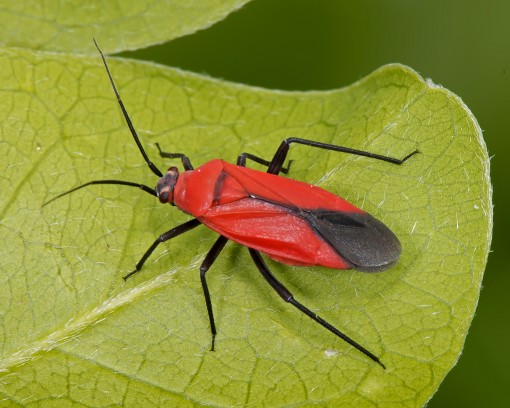
Let’s return to the Texas mountain laurel. Indians in Texas were known to consume small quantities of the seeds as a hallucinogen. The mountain laurel bug (Lopidea major) uses the same toxins to ward off predators. You will see these bugs on your mountain laurels in early spring. They do mar the surface of the leaves, but otherwise they are harmless to the plant.
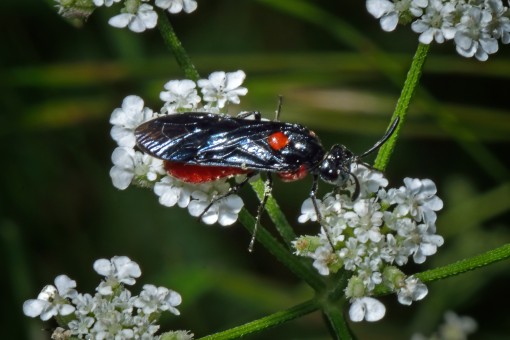
Even poison ivy has its dependents. The poison ivy sawfly is a leaf miner of poison ivy. The larvae feed on no other species of plant.
Shoal Creek is a narrow thread of green strung across Austin’s metastasizing urban landscape. Shoal Creek needs parks, trails, and other improvements that primarily serve our growing human population. But, Shoal Creek also needs those places where nature can be allowed to remain wild. Poison ivy may be a pest in a residential landscape, but, within the larger context of the Shoal Creek watershed, poison ivy and other toxic “weeds” have a vital role. These plants and insects are part of Austin’s natural patrimony, a heritage that is at risk from being lost in our rush to grow.
